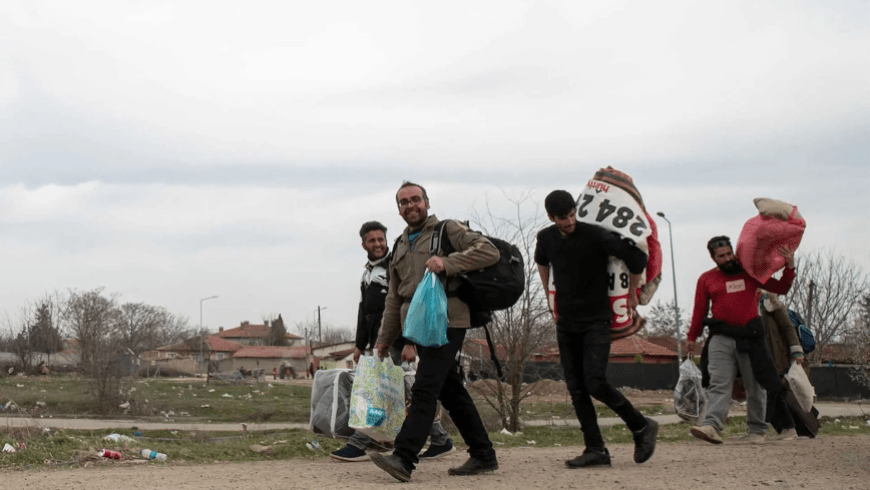The fall of Bashar al-Assad’s regime and the lifting of international sanctions in 2025 marked a seismic shift in Syria’s political landscape. To many, it was the long-awaited opening of a new chapter—one that promised reconstruction, reconciliation, and the return of millions of displaced Syrians. Yet as the dust settles, a more sobering reality emerges: return is not a finish line, but the start of another arduous journey.
Across Damascus, rural towns, and the refugee camps of neighboring countries, the optimism of “going home” is tempered by broken infrastructure, institutional fragility, and the absence of a comprehensive national reintegration plan. The question confronting Syrians today is not whether they can return, but whether they should—and under what conditions.
A Harsh Homecoming
Testimonies from returnees like Esraa, Musa, and Batoul highlight the dissonance between hope and hardship. Rent prices in Damascus have tripled due to a critical housing shortage, driven by the destruction of over a quarter of the country’s residential units. In regions like Masyaf, electricity and water remain intermittent at best, while education and healthcare systems are threadbare. The absence of a functioning legal framework to regulate the rental market leaves returning families exposed to exploitation.
The overall picture is one of acute vulnerability: returnees are re-entering a country that is not yet ready to receive them. Even basic public services are either missing or unevenly distributed, and economic recovery remains aspirational rather than operational.
Sanctions Lifted, But Trust Not Restored
The international community’s decision to lift economic sanctions on Syria, including measures targeting banking, trade, and energy, was widely celebrated. In theory, this should stimulate investment, restart public services, and open humanitarian channels. However, for many Syrians in exile, these macroeconomic gestures fall short of addressing the deeper emotional and political scars that drove their displacement.
The experience of exile has not been solely economic—it has been existential. Syrians fled a regime that weaponized institutions against its own people, using detention, torture, and conscription to maintain power. For these individuals, return requires more than an economic reboot; it demands guarantees of personal safety, legal amnesty, and political transformation. Until those are codified and implemented, the lifting of sanctions is seen not as a resolution, but as a gesture lacking substance.
Return as an Uneven Landscape
The geography of return is shaped by politics, policy, and proximity. In neighboring countries such as Lebanon, Turkey, and Jordan, legal frameworks for return vary significantly.
- In Lebanon, return is possible but unregulated, with no formal reintegration support. Over 300,000 have returned, often to homes that no longer exist.
- In Turkey, the government has facilitated voluntary return with infrastructure upgrades, digital application systems, and property transfer mechanisms. Yet this applies mostly to border areas under Turkish influence—not to the country as a whole.
- In Jordan, where conditions for refugees are relatively stable, returns remain minimal and cautious. The state has offered legal pathways for businessmen and students, but most families are in wait-and-see mode.
These discrepancies underscore a critical point: return is not a national decision, but a fragmented process negotiated across borders, often subject to the shifting priorities of host states and international agencies.
The Refugee as Rational Actor
The decision to return is not merely emotional or patriotic—it is rational, calculated, and shaped by risk. As researcher Kamal Kassam argues, many refugees now function less as “exiles” and more as “migrants,” weighing the costs and benefits of return based on security, opportunity, and belonging.
Those living in hardship—especially in Lebanon’s deteriorating economy or Turkey’s politically charged climate—are more likely to return early. Meanwhile, Syrians who have built lives in Europe, often more educated and professionally integrated, are far less likely to return in the short term.
In this context, return is classed, gendered, and generational. It is more viable for those with fewer options abroad, and less appealing to those who have found stability elsewhere.
Rebuilding Requires More Than Bricks
What Syria needs now is not just reconstruction—it needs reintegration. And this cannot happen through ad hoc responses or technocratic measures. A successful return process must include:
- Legal assurances: General amnesty, protection of property rights, and removal of security blacklists.
- Economic incentives: Housing projects for returnees, tax breaks for employers hiring returnees, and small business support.
- Institutional reform: Demilitarization of public life, restructuring of intelligence agencies, and the creation of independent human rights bodies.
- Diaspora engagement: Channels for remote participation in rebuilding efforts, from financial transfers to knowledge-sharing networks.
The experiences of other post-conflict states offer templates: Tunisia’s healthcare inclusion for returnees, Germany’s voluntary return support programs, and the Philippines’ integration of overseas workers into national welfare systems.
Conclusion: Return Without Reform Is Repetition
Syria today stands at a fragile threshold. The collapse of Assad’s regime has opened the political space for change, but the foundations of a new state are still under construction. Refugee return, often cited as a benchmark of national recovery, risks becoming a hollow metric if not accompanied by serious political and institutional transformation.
Without a vision of citizenship rooted in rights—not just repatriation—Syria may win back its people territorially but lose them emotionally and politically. Return must be reimagined not as an end, but as part of a national renaissance—where coming home also means becoming whole again.
Only then can Syria truly move from post-conflict to post-trauma, and from return to renewal.


